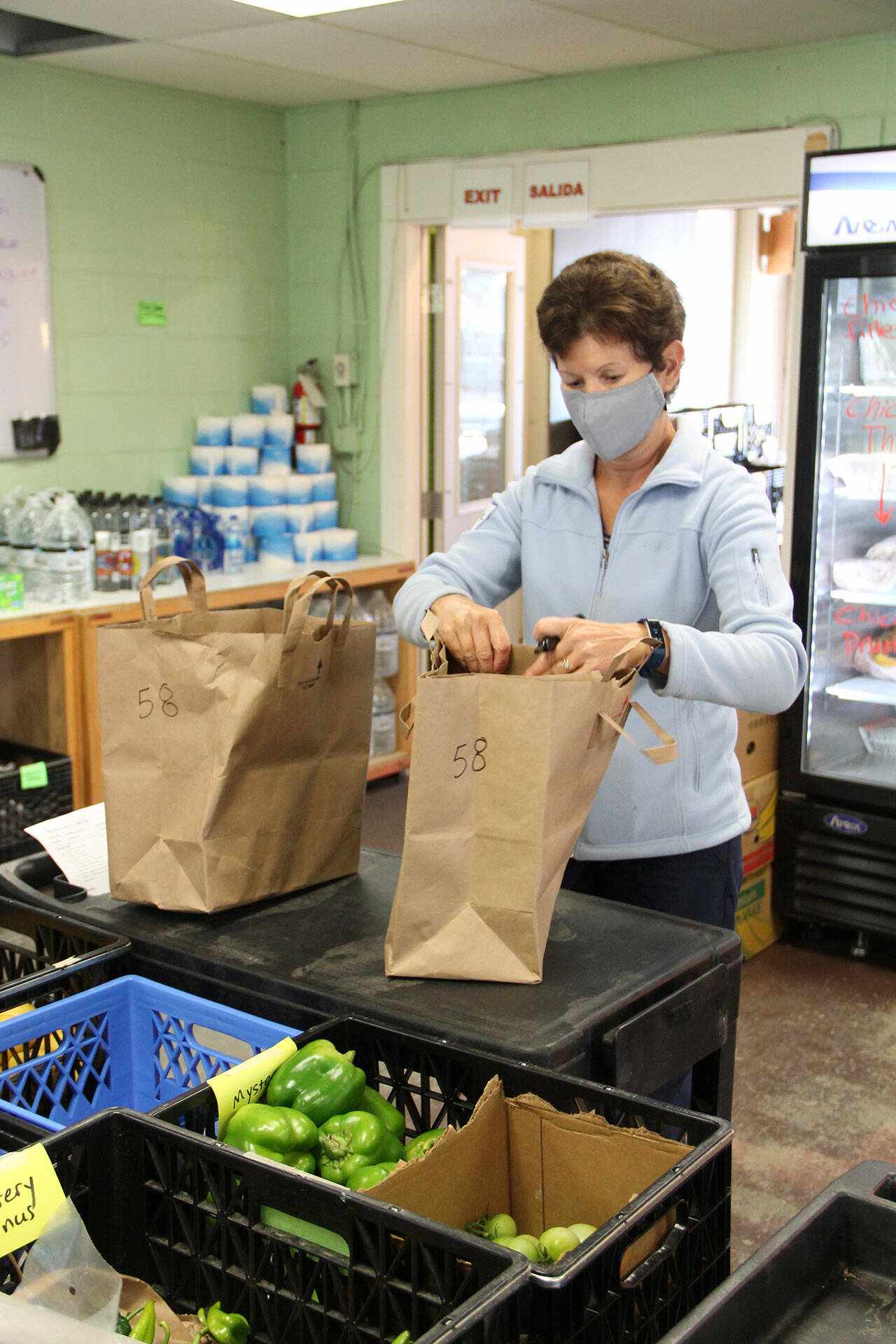According to Vashon Maury Community Food Bank Executive Director Emily Scott, 2021 proved to be an ideal time to launch a strategic planning effort for the organization in order to best identify needs in the community and meet them in sustainable ways.
The new strategic plan identifies four priorities for the food bank to address moving forward.
Improving service
In improving grocery service at the food bank, Scott aims to increase food access, decrease food insecurity, and make inroads to populations of people who aren’t using the food bank currently.
“We think of the food bank as a community resource that anyone and everyone should use if they could benefit from reduced costs of groceries,” said Scott.
Currently, the main programming offered by the food bank is weekly grocery service. Anyone can stop by the food bank on Wednesdays to pick up groceries from 10 a.m. to 2 p.m. and again from 4 to 7 p.m.
Those who visit the food bank are able to choose what they would like by filling out an order form, which is then handed to a volunteer to fill. There is also the option for contactless home delivery, which occurs on Thursdays and Fridays.
On a weekly basis, the food bank serves about 230 to 250 households. The food bank also uses around 90 to 110 volunteers each week to serve the community.
The organization also operates a “picnics to go” program during the summer months that provides free meals for youth and teens. In addition, due to a grant received from Granny’s Attic and previous funding from United Way of King County, the food bank has recently launched a program that provides snack items for students who need them in the Vashon Island School District.
Expansion
Scott also emphasized the importance of expansion for the food bank, particularly in building out “infrastructure to be able to better connect people to other resources.”
While still in the early phases, the food bank has been approved for $150,000 in funding through the Veteran Human Services Levy for a community connections program.
According to Scott, the community connections program would employ one to two “community connectors,” who would be equipped with Chromebooks and be in several different places on Vashon throughout the week.
These “community connectors” would be able to assist individuals with a variety of matters, such as food stamp applications, utility assistance and Medicaid applications.
“The notion is that we would have these people physically present in places where folks are already going, who would hold internal knowledge about local services, but also be able to help navigate in real-time,” said Scott.
In creating the community connections program, Scott also wants to avoid building programs that are redundant with others currently offered on the island.
Vashon Youth and Family Services (VYFS), in partnership with the Vashon United Methodist Church, runs the Oasis program, which Scott described as being similar to the community connections program. The VYFS Oasis program is staffed by community resource navigators, and connects islanders to social services and resources. The program offers a voucher program as well for items such as ferry passes, VIGA boxes and prescription vouchers.
“In a small town, the last thing we need is for everyone to be creating similar, parallel programming and end up feeling like we’re competing or we’re still leaving a bunch of gaps,” said Scott.
Culture and Ethos
In moving the food bank forward, Scott is focused on the overall culture of the organization, but especially in the ways that culture addresses its goals of racial equity and inclusion.
“It has just become readily apparent to everyone across sectors, including the nonprofit sector, that institutional racism and exclusion are prevalent everywhere,” said Scott. “We’ve got a lot of work to do, but we plan on making investments and having that strategic goal be reflected in our budgeting and in all of the language we use, and in all of our programming.”
Sustainability of Organization
The sustainability of the food bank, primarily by building human capital, has been another strategic priority of the organization.
Over the last six months, the food bank has experienced a 50% staff turnover. In speaking with Scott, this turnover was not a source of concern.
“I’m almost happy to say that every person who’s left was not because they didn’t care deeply about this place or the work they’re doing,” said Scott. “People were just moving on to the next phase of their lives … I think for lots of people COVID kind of helped people focus on, revision their priorities and balance what’s important.”
In strengthening the organization, Scott plans to “right-size” the food bank’s staffing model, and create more living-wage jobs. Ideally, Scott would like to see a tiered structure of compensation for her employees.
“[In the] non-profit sector, everyone’s doing such good, ‘heart’ work, but [are] notoriously underpaid for that work,” said Scott. “We’re trying to buck that trend, and I think a lot of other progressive organizations are doing the same thing these days.”
To make the future plans of the food bank possible, Scott and her team will shortly be rolling out a new campaign targeting sustaining donors. According to Scott, sustaining gifts help cover overhead costs at the organization like rent, utilities, and refrigerator and freezer maintenance.
For more information about the Vashon Maury Community Food Bank, visit vashonfoodbank.org


